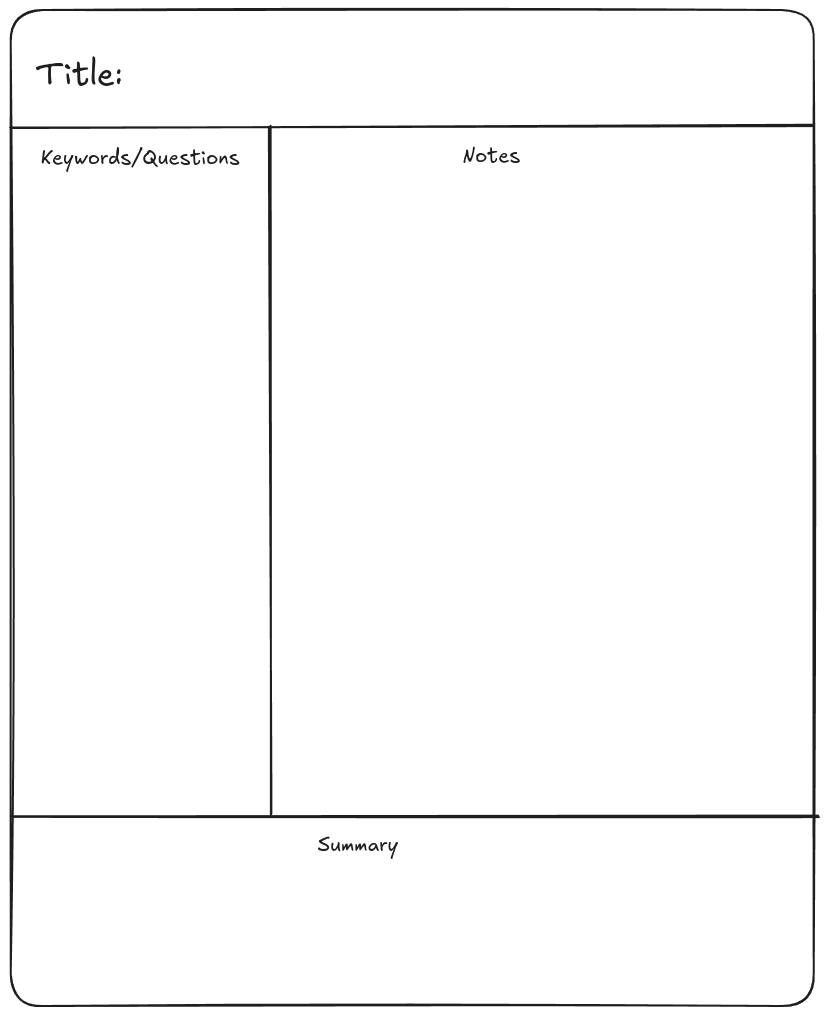#4 Cornell Notes: The Timeless Technique for Smarter Learning
A Simple Yet Effective Approach to Organizing Your Learning for Maximum Retention

Thank you so much for joining me on my fourth article. Since last week, I have been busy with some personal topics, I couldn't write an article. In my previous article, we discussed building your own PKM (Personal Knowledge Management) using the PARA method. Did you try to implement it in your favorite notes' app? How did it work out for you? Share your thoughts in the comments, I love to hear from you. If you have not read it yet, here is the link:
#3 Building Your Personal Knowledge Library: The PARA method
Thanks for joining me for my third article. In the last article, we discussed how often we get lost in the endless flow of information, be it social media, news or event notifications. I gave an exercise: When you consumed content in any form, whether a video, an article or a podcast—I asked you to pause and capture your thoughts. Were you able to try i…
This week, let us explore a powerful technique called the Cornell Method. This method was introduced by Dr. Walter Pauk at Cornell University around 1960. This method has been around for decades. But, it remains one of the best methods available today to help us optimize learning.
Note-taking or Note making plays a crucial role in active learning. At the end of the day, our own PKM is essentially a collection of notes but in an organized way.
How to take Cornell Notes?
In this method, we divide a page into three sections
One block at the top for the title.
Two columns in the middle.
A summary section in the footer
You can see below how a page can look like,
Here's how each section works:
Title Section:
As the name suggests, you can use it to keep the title of what you are learning.
Middle Section(Two Columns),
The right side column is a bigger column than the left column. Its width could be around 70% of the total width of the page. We can use this column, to collect the key points or thoughts from the lecture, book, podcast or video that you're learning from.
The Left side column is smaller. Its width could be around 30% of the total page width. You can use this section to capture keywords, questions that you have, or any other additional resources.
Summary Section,
You can use this section, after completing the notes, to quickly summarize what you learnt. If your notes span many pages, you can add a summary on each page's summary section.
Advantages
By following this technique, you actively summarize what you've learned. This leads to attaining a deeper understanding of the content.
When you take notes, rather than taking every point from the lecture, you'll focus on key points and thoughts, helping you to capture the essence of the material.
One of the biggest advantages of this method is that you'll always have a note that is ready for quick review. You can quickly refresh your memory by looking at the summary section and looking at the Keywords section.
If you want the explanation in the video version, you can watch the following video
This week, if you are planning to learn something, try this method while taking notes. Let me know how did you feel in the comments. By the way have you noticed I highlighted Note making word? In my next article let us discuss what is Notes Making and what is Notes Taking and the differences between them.



